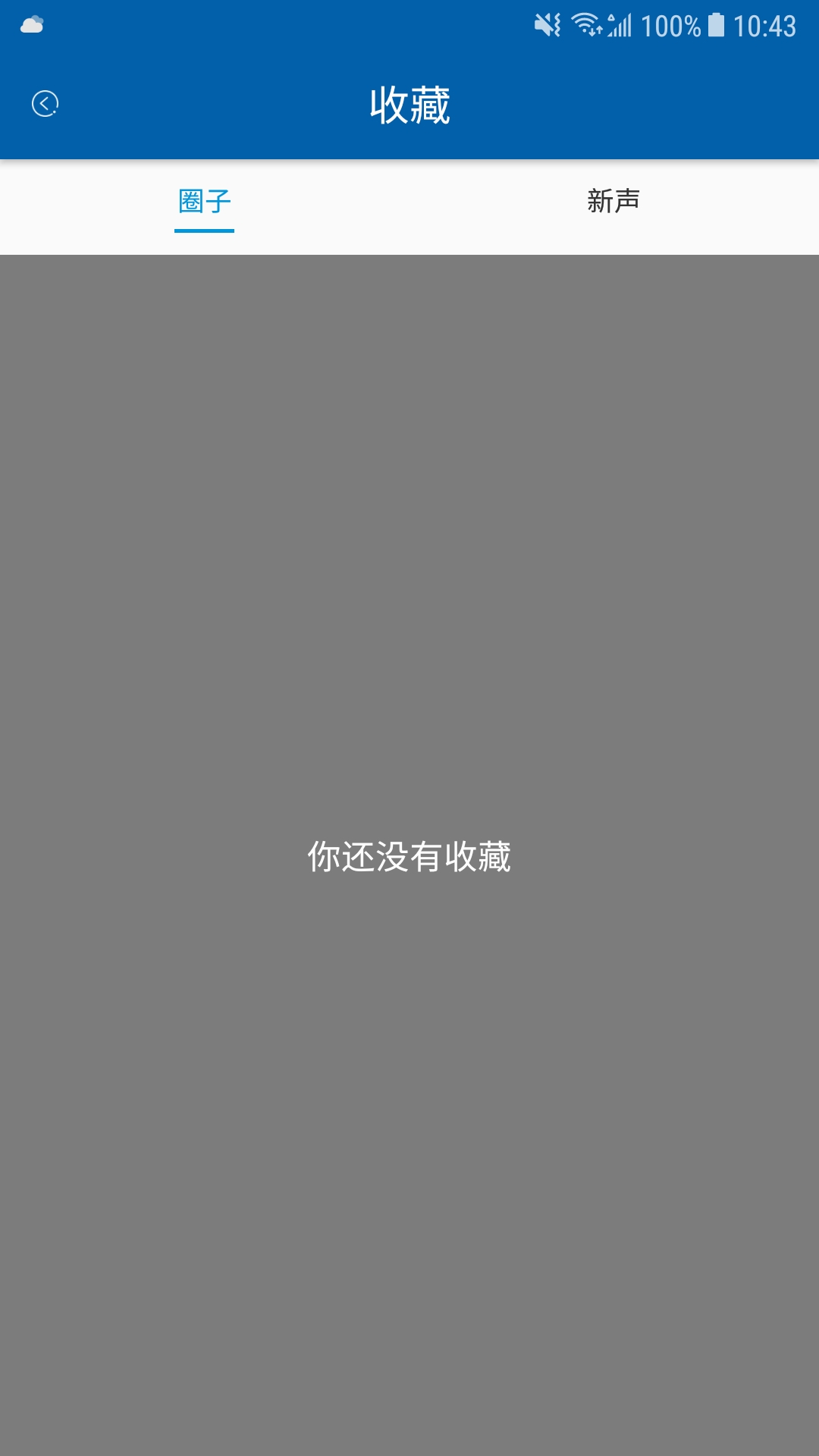原生TabLayout下标宽度不能自适应的解决方案
Posted 童政通
tags:
篇首语:本文由小常识网(cha138.com)小编为大家整理,主要介绍了原生TabLayout下标宽度不能自适应的解决方案相关的知识,希望对你有一定的参考价值。
TabLayout我们再熟悉不过了,在开发中,像这种tab切换的需求都会用到TabLayout,它是由官方提供的一个控件,在support design 包中。使用起来非常简单方便,交互效果也很不错,能满足我们开发中95%的需求。但是它有一个缺陷:不能改变Tab下划线(Indicator)的宽度。
首先看布局:
enhance_tab_layout.xml:
<?xml version="1.0" encoding="utf-8"?>
<FrameLayout xmlns:android="http://schemas.android.com/apk/res/android"
xmlns:app="http://schemas.android.com/apk/res-auto"
android:layout_width="match_parent"
android:layout_height="wrap_content">
<android.support.design.widget.TabLayout
android:id="@+id/enhance_tab_view"
android:layout_width="match_parent"
android:layout_height="wrap_content"
app:tabIndicatorHeight="0dp"
>
</android.support.design.widget.TabLayout>
</FrameLayout>Tab item 布局:tab_item_layout.xml
<?xml version="1.0" encoding="utf-8"?>
<LinearLayout xmlns:android="http://schemas.android.com/apk/res/android"
android:orientation="vertical"
android:gravity="center"
android:layout_width="match_parent"
android:layout_height="match_parent">
<TextView
android:id="@+id/tab_item_text"
android:layout_width="wrap_content"
android:layout_height="wrap_content"
android:textSize="13sp"
android:text="首页"
android:textColor="#333333"
/>
<View
android:id="@+id/tab_item_indicator"
android:layout_width="30dp"
android:layout_height="2dp"
android:layout_marginTop="5dp"
android:background="@color/colorAccent"
android:visibility="invisible"
/>
</LinearLayout>自定义的EnhanceTabLayout.java
public class EnhanceTabLayout extends FrameLayout
private TabLayout mTabLayout;
private List<String> mTabList;
private List<View> mCustomViewList;
private int mSelectIndicatorColor;
private int mSelectTextColor;
private int mUnSelectTextColor;
private int mIndicatorHeight;
private int mIndicatorWidth;
private int mTabMode;
private int mTabTextSize;
public EnhanceTabLayout(@NonNull Context context)
super(context);
init(context,null);
public EnhanceTabLayout(@NonNull Context context, @Nullable AttributeSet attrs)
super(context, attrs);
init(context,attrs);
public EnhanceTabLayout(@NonNull Context context, @Nullable AttributeSet attrs, int defStyleAttr)
super(context, attrs, defStyleAttr);
init(context,attrs);
@RequiresApi(api = Build.VERSION_CODES.LOLLIPOP)
public EnhanceTabLayout(@NonNull Context context, @Nullable AttributeSet attrs, int defStyleAttr, int defStyleRes)
super(context, attrs, defStyleAttr, defStyleRes);
init(context,attrs);
private void readAttr(Context context,AttributeSet attrs)
TypedArray typedArray = context.obtainStyledAttributes(attrs,R.styleable.EnhanceTabLayout);
mSelectIndicatorColor = typedArray.getColor(R.styleable.EnhanceTabLayout_tabIndicatorColor,context.getResources().getColor(R.color.colorAccent));
mUnSelectTextColor = typedArray.getColor(R.styleable.EnhanceTabLayout_tabTextColor, Color.parseColor("#666666"));
mSelectTextColor = typedArray.getColor(R.styleable.EnhanceTabLayout_tabSelectTextColor,context.getResources().getColor(R.color.colorAccent));
mIndicatorHeight = typedArray.getDimensionPixelSize(R.styleable.EnhanceTabLayout_tabIndicatorHeight,1);
mIndicatorWidth = typedArray.getDimensionPixelSize(R.styleable.EnhanceTabLayout_tabIndicatorWidth,0);
mTabTextSize = typedArray.getDimensionPixelSize(R.styleable.EnhanceTabLayout_tabTextSize,13);
mTabMode = typedArray.getInt(R.styleable.EnhanceTabLayout_tab_Mode,2);
typedArray.recycle();
private void init(Context context,AttributeSet attrs)
readAttr(context,attrs);
mTabList = new ArrayList<>();
mCustomViewList = new ArrayList<>();
View view = LayoutInflater.from(getContext()).inflate(R.layout.enhance_tab_layout,this,true);
mTabLayout = view.findViewById(R.id.enhance_tab_view);
// 添加属性
mTabLayout.setTabMode(mTabMode == 1 ? TabLayout.MODE_FIXED:TabLayout.MODE_SCROLLABLE);
mTabLayout.addOnTabSelectedListener(new TabLayout.OnTabSelectedListener()
@Override
public void onTabSelected(TabLayout.Tab tab)
// onTabItemSelected(tab.getPosition());
// Tab 选中之后,改变各个Tab的状态
for (int i=0;i<mTabLayout.getTabCount();i++)
View view = mTabLayout.getTabAt(i).getCustomView();
if(view == null)
return;
TextView text = (TextView) view.findViewById(R.id.tab_item_text);
View indicator = view.findViewById(R.id.tab_item_indicator);
if(i == tab.getPosition()) // 选中状态
text.setTextColor(mSelectTextColor);
indicator.setBackgroundColor(mSelectIndicatorColor);
indicator.setVisibility(View.VISIBLE);
else// 未选中状态
text.setTextColor(mUnSelectTextColor);
indicator.setVisibility(View.INVISIBLE);
@Override
public void onTabUnselected(TabLayout.Tab tab)
@Override
public void onTabReselected(TabLayout.Tab tab)
);
public List<View> getCustomViewList()
return mCustomViewList;
public void addOnTabSelectedListener (TabLayout.OnTabSelectedListener onTabSelectedListener)
mTabLayout.addOnTabSelectedListener(onTabSelectedListener);
/**
* 与TabLayout 联动
* @param viewPager
*/
public void setupWithViewPager(@Nullable ViewPager viewPager)
mTabLayout.addOnTabSelectedListener(new ViewPagerOnTabSelectedListener(viewPager,this));
/**
* retrive TabLayout Instance
* @return
*/
public TabLayout getTabLayout()
return mTabLayout;
/**
* 添加tab
* @param tab
*/
public void addTab(String tab)
mTabList.add(tab);
View customView = getTabView(getContext(),tab,mIndicatorWidth,mIndicatorHeight,mTabTextSize);
mCustomViewList.add(customView);
mTabLayout.addTab(mTabLayout.newTab().setCustomView(customView));
public static class ViewPagerOnTabSelectedListener implements TabLayout.OnTabSelectedListener
private final ViewPager mViewPager;
private final WeakReference<EnhanceTabLayout> mTabLayoutRef;
public ViewPagerOnTabSelectedListener(ViewPager viewPager,EnhanceTabLayout enhanceTabLayout)
mViewPager = viewPager;
mTabLayoutRef = new WeakReference<EnhanceTabLayout>(enhanceTabLayout);
@Override
public void onTabSelected(TabLayout.Tab tab)
mViewPager.setCurrentItem(tab.getPosition());
EnhanceTabLayout mTabLayout = mTabLayoutRef.get();
if(mTabLayoutRef!=null)
List<View> customViewList = mTabLayout.getCustomViewList();
if(customViewList == null || customViewList.size() ==0)
return;
for (int i=0;i<customViewList.size();i++)
View view = customViewList.get(i);
if(view == null)
return;
TextView text = (TextView) view.findViewById(R.id.tab_item_text);
View indicator = view.findViewById(R.id.tab_item_indicator);
if(i == tab.getPosition()) // 选中状态
text.setTextColor(mTabLayout.mSelectTextColor);
indicator.setBackgroundColor(mTabLayout.mSelectIndicatorColor);
indicator.setVisibility(View.VISIBLE);
else// 未选中状态
text.setTextColor(mTabLayout.mUnSelectTextColor);
indicator.setVisibility(View.INVISIBLE);
@Override
public void onTabUnselected(TabLayout.Tab tab)
// No-op
@Override
public void onTabReselected(TabLayout.Tab tab)
// No-op
/**
* 获取Tab 显示的内容
*
* @param context
* @param
* @return
*/
public static View getTabView(Context context,String text,int indicatorWidth,int indicatorHeight,int textSize)
View view = LayoutInflater.from(context).inflate(R.layout.tab_item_layout, null);
TextView tabText = (TextView) view.findViewById(R.id.tab_item_text);
if(indicatorWidth>0)
View indicator = view.findViewById(R.id.tab_item_indicator);
ViewGroup.LayoutParams layoutParams = indicator.getLayoutParams();
layoutParams.width = indicatorWidth;
layoutParams.height = indicatorHeight;
indicator.setLayoutParams(layoutParams);
tabText.setTextSize(textSize);
tabText.setText(text);
return view;
暴露了一些常用方法和原生TabLayout 的几个重要属性,自定义属性如下:
<com.example.codoon.customtablayout.EnhanceTabLayout
android:id="@+id/enhance_tab_layout"
android:layout_marginTop="30dp"
android:layout_width="match_parent"
android:layout_height="wrap_content"
app:tabIndicatorHeight="2dp"
app:tabIndicatorWidth="30dp"
app:tabTextColor="#999999"
app:tab_Mode="mode_scrollable" //这个是模式 scrollable 每个tab下划线一样长 mode_fixed 就是填充
app:tabSelectTextColor="@color/colorPrimary"
app:tabIndicatorColor="@color/colorPrimary"
app:tabTextSize="6sp"
>
</com.example.codoon.customtablayout.EnhanceTabLayout>Activity中代码如下:
mEnhanceTabLayout = findViewById(R.id.enhance_tab_layout);
mEnhanceTabLayout.addOnTabSelectedListener(new TabLayout.OnTabSelectedListener()
@Override
public void onTabSelected(TabLayout.Tab tab)
Log.e("log","onTabSelected");
@Override
public void onTabUnselected(TabLayout.Tab tab)
@Override
public void onTabReselected(TabLayout.Tab tab)
);
for(int i=0;i<sTitle.length;i++)
mEnhanceTabLayout.addTab(sTitle[i]);
mEnhanceTabLayout.setupWithViewPager(mViewPager);
List<Fragment> fragments = new ArrayList<>();
for(int i=0;i<sTitle.length;i++)
fragments.add(ItemFragment.newInstance(sTitle[i]));
MyAdapter adapter = new MyAdapter(getSupportFragmentManager(),fragments, Arrays.asList(sTitle));
mViewPager.setAdapter(adapter);
mViewPager.addOnPageChangeListener(new TabLayout.TabLayoutOnPageChangeListener(mEnhanceTabLayout.getTabLayout()));
mEnhanceTabLayout.setupWithViewPager(mViewPager);注意,如果是配合ViewPager使用,需要下面两行代码,单独使用则不需要:
一下图一是原生TabLayout的效果 图二是使用博客方式实现的效果
图一:

图二:

还有就是使用三方库
第三方开源库
如果前面2中方式都满足不了你的需求的话,你可以使用第三方库,也有一些不错的开源库,这里推荐2个。
**1 , MagicIndicator **
github:https://github.com/hackware1993/MagicIndicator
star:4.4k
MagicIndicator ,使用方便,还有多种模式可以选择。包括:
添加依赖
repositories
...
maven
url "https://jitpack.io"
dependencies
...
compile 'com.github.hackware1993:MagicIndicator:1.5.0'
布局文件
<net.lucode.hackware.magicindicator.MagicIndicator
android:id="@+id/magic_indicator"
android:layout_width="match_parent"
android:layout_height="49dp">
</net.lucode.hackware.magicindicator.MagicIndicator>代码实现使用
MagicIndicator magicIndicator = (MagicIndicator) findViewById(R.id.magic_indicator);
CommonNavigator commonNavigator = new CommonNavigator(this);
commonNavigator.setAdapter(new CommonNavigatorAdapter()
@Override
public int getCount()
return sTitle == null ? 0 : sTitle.length;
@Override
public IPagerTitleView getTitleView(Context context, final int index)
ColorTransitionPagerTitleView colorTransitionPagerTitleView = new ColorTransitionPagerTitleView(context);
colorTransitionPagerTitleView.setNormalColor(Color.GRAY);
colorTransitionPagerTitleView.setSelectedColor(Color.BLACK);
colorTransitionPagerTitleView.setText(sTitle[index]);
colorTransitionPagerTitleView.setOnClickListener(new View.OnClickListener()
@Override
public void onClick(View view)
mViewPager.setCurrentItem(index);
);
return colorTransitionPagerTitleView;
@Override
public IPagerIndicator getIndicator(Context context)
LinePagerIndicator indicator = new LinePagerIndicator(context);
indicator.setMode(LinePagerIndicator.MODE_EXACTLY);
//设置indicator的宽度
indicator.setLineWidth(TabUtils.dp2px(context,20));
return indicator;
);
magicIndicator.setNavigator(commonNavigator);
ViewPagerHelper.bind(magicIndicator,mViewPager);效果如下图

还有一个三方库
2 , FlycoTabLayout
github:https://github.com/H07000223/FlycoTabLayout
star:6.5k
功能和MagicIndicator差不多,都支持多种Indicator效果:
具体使用查看 github
以上是关于原生TabLayout下标宽度不能自适应的解决方案的主要内容,如果未能解决你的问题,请参考以下文章